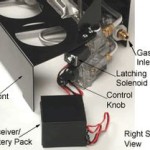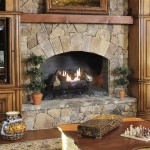Addressing Odors from Non-Vented Gas Fireplaces
Non-vented, or vent-free, gas fireplaces offer a convenient and relatively inexpensive heating solution for many homes. They burn natural gas or propane and, as the name suggests, do not require a chimney or external venting system. However, one common concern associated with these appliances is the potential for unusual or unpleasant odors. Understanding the causes of these smells and knowing how to address them is crucial for safe and comfortable operation.
The presence of an odor emanating from a non-vented gas fireplace does not necessarily indicate a dangerous situation, but it should not be ignored. Several factors can contribute to these smells, ranging from the fireplace's initial break-in period to incomplete combustion or the presence of foreign materials.
The Initial Burn-Off Period
A frequently encountered odor associated with new non-vented gas fireplaces is a plastic-like or burning smell during the first few hours of operation. This is often attributed to the burning off of residual oils, manufacturing lubricants, paint, and protective coatings applied to the various components of the fireplace during the manufacturing process. These substances, while not intended for combustion, will inevitably be heated when the fireplace is first used, resulting in their evaporation and subsequent burning. This process is temporary and should dissipate after a few hours of operation. Adequate ventilation during this initial burn-off period is recommended, which can be achieved by opening windows and doors to allow for proper air circulation.
It is important to differentiate this initial burn-off smell from other, more persistent odors. The initial odor should diminish and eventually disappear. If the smell persists or intensifies after several hours of use, further investigation is required to determine the root cause.
Incomplete Combustion and Gas Leaks
A more concerning source of odor from a non-vented gas fireplace is incomplete combustion. When the gas does not burn completely, it can produce byproducts such as carbon monoxide and unburned hydrocarbons. While carbon monoxide is odorless, the unburned hydrocarbons can release a faint, gas-like or chemical smell. This is a crucial warning sign, as carbon monoxide is a dangerous and potentially lethal gas.
Several factors can contribute to incomplete combustion. These include insufficient oxygen supply to the burner, improper gas pressure, clogged or dirty burner ports, or a malfunctioning oxygen depletion sensor (ODS). The ODS is a safety device designed to shut off the gas supply if the oxygen level in the room drops below a safe threshold. If the ODS is faulty, it may not function correctly, increasing the risk of carbon monoxide production.
Suspected gas leaks, even if faint, should be treated with utmost caution. A gas leak can manifest as a sulfur-like or rotten egg smell, which is often added to natural gas for safety purposes, as natural gas itself is odorless. Propane, on the other hand, naturally has a distinct, though often subtle, odor. If a persistent gas smell is detected, it is imperative to immediately shut off the gas supply to the fireplace and contact a qualified gas technician or the local gas utility company. Under no circumstances should the fireplace be used until the leak is located and repaired.
Foreign Materials and Dust Accumulation
Another common cause of odors in non-vented gas fireplaces is the presence of foreign materials. Dust, pet dander, hair, and other debris can accumulate on the burner, logs, or other components of the fireplace. When the fireplace is turned on, these materials heat up and burn, producing a distinct and often unpleasant smell. The smell is often described as a burning dust or musty odor.
Regular cleaning and maintenance are crucial for preventing this type of odor. The fireplace should be turned off and allowed to cool completely before cleaning. A vacuum cleaner with a brush attachment can be used to remove dust and debris from the burner, logs, and surrounding areas. It is important to follow the manufacturer's instructions for cleaning, as some components may require special care. The pilot light assembly especially needs to be well maintained. Do not use flammable cleaning solutions, as these can pose a fire hazard.
Additionally, items placed too close to the fireplace opening, such as decorations or furniture, can also emit odors when exposed to the heat. Ensure that all flammable materials are kept a safe distance from the fireplace to prevent burning or melting.
Proper ventilation within the room containing the fireplace is essential, even though the fireplace is vent-free. Adequate airflow helps to dilute and remove any odors that may be produced. Regular inspection of the fireplace and its components can help identify potential problems early on, preventing odors from becoming a persistent issue. If you are uncomfortable performing these tasks yourself, a qualified gas technician can provide professional inspection and maintenance services.

Vent Free Fireplace Odor

Vent Free Fireplace Odor
:max_bytes(150000):strip_icc()/ventless-gas-fireplaces-4160746-hero-f9d4bdcd9bd446eb84406de306f790ba.jpg?strip=all)
How To Pick Out A Ventless Gas Fireplace

Ventless Gas Fireplace Maintenance Guide Fireplaces Direct Learning Center

Vented Vs Ventless Gas Logs What S The Difference

Gas Fireplace Odors

Ventless Gas Fireplace Maintenance Guide Fireplaces Direct Learning Center

Why Do My Gas Logs Smell Foster Fuels

Vent Free Gas Logs Pros And Cons Kansas City Chimney Service

A Ventless Gas Fireplace Doesn T Belong In Your Home Greenbuildingadvisor








